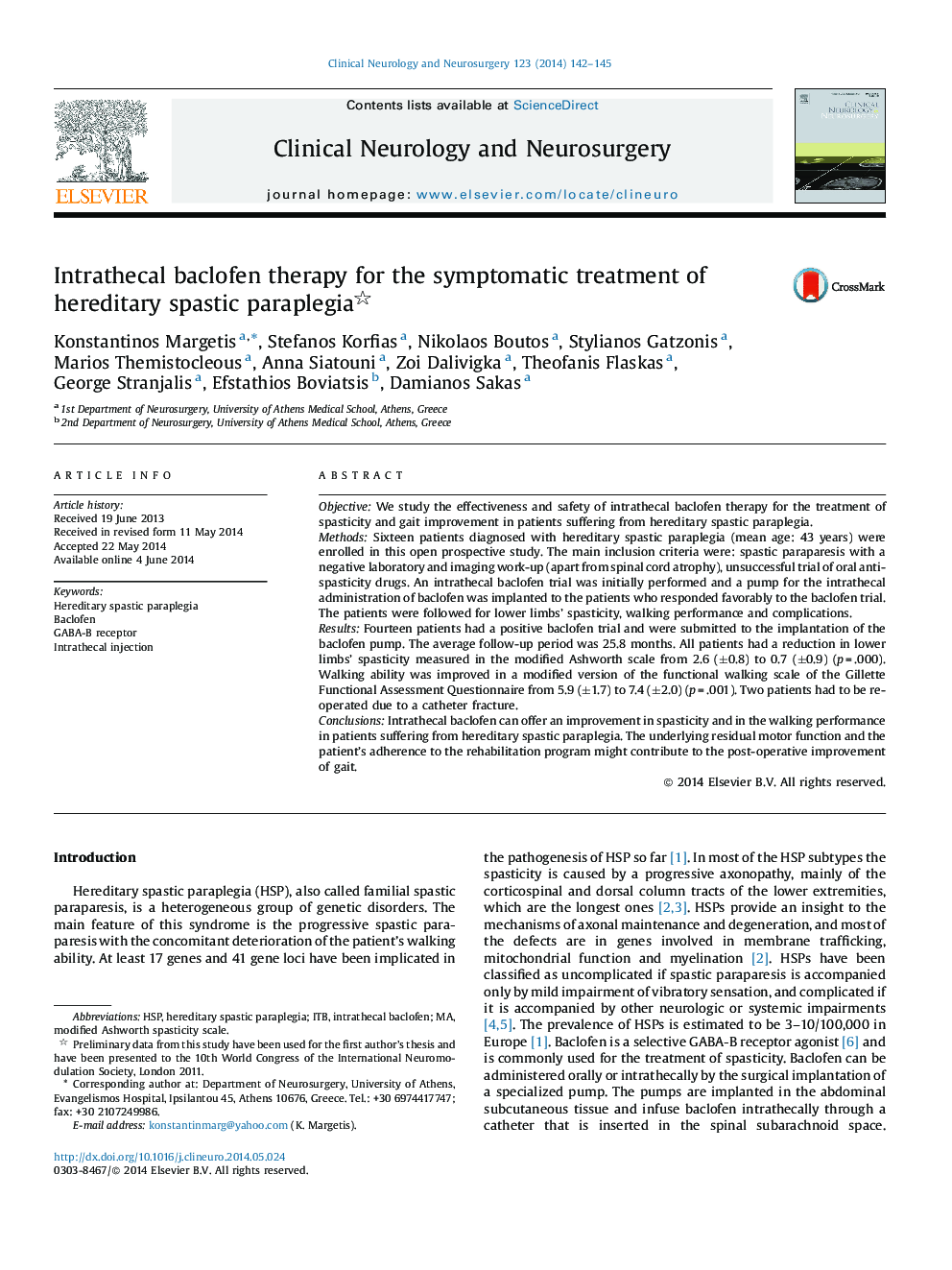| Article ID | Journal | Published Year | Pages | File Type |
|---|---|---|---|---|
| 3040178 | Clinical Neurology and Neurosurgery | 2014 | 4 Pages |
ObjectiveWe study the effectiveness and safety of intrathecal baclofen therapy for the treatment of spasticity and gait improvement in patients suffering from hereditary spastic paraplegia.MethodsSixteen patients diagnosed with hereditary spastic paraplegia (mean age: 43 years) were enrolled in this open prospective study. The main inclusion criteria were: spastic paraparesis with a negative laboratory and imaging work-up (apart from spinal cord atrophy), unsuccessful trial of oral anti-spasticity drugs. An intrathecal baclofen trial was initially performed and a pump for the intrathecal administration of baclofen was implanted to the patients who responded favorably to the baclofen trial. The patients were followed for lower limbs’ spasticity, walking performance and complications.ResultsFourteen patients had a positive baclofen trial and were submitted to the implantation of the baclofen pump. The average follow-up period was 25.8 months. All patients had a reduction in lower limbs’ spasticity measured in the modified Ashworth scale from 2.6 (±0.8) to 0.7 (±0.9) (p = .000). Walking ability was improved in a modified version of the functional walking scale of the Gillette Functional Assessment Questionnaire from 5.9 (±1.7) to 7.4 (±2.0) (p = .001). Two patients had to be re-operated due to a catheter fracture.ConclusionsIntrathecal baclofen can offer an improvement in spasticity and in the walking performance in patients suffering from hereditary spastic paraplegia. The underlying residual motor function and the patient’s adherence to the rehabilitation program might contribute to the post-operative improvement of gait.
